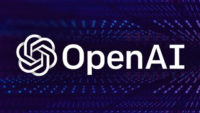Artificial intelligence research institute OpenAI, after collecting trillions of words, debuted its first commercial product, the API. Its goal is to create the “most flexible general-purpose AI language system” in existence. Currently, the API’s skills include translating between languages, writing news stories, and answering everyday questions. The API is engaged in limited testing and, said chief executive Sam Altman, will be released broadly for use in a range of tasks, such as customer support, education and games.
Bloomberg reports that OpenAI, founded in 2015 as a counterbalance to Big Tech companies, has since partnered with Microsoft, which invested $1 billion. Now OpenAI uses Microsoft’s supercomputers to create its AI systems. In the process, OpenAI morphed from a non-profit to a commercial enterprise. Startup Veriph.ai chief executive Eli Chen noted that OpenAI’s API “almost gets to the point where it assimilates all of human knowledge because it has seen everything before.”
“Very few other companies would be able to afford what it costs to build this type of huge model,” he added.

For now, customers are invitation-only. The API’s current language system GPT-3 is “100 times larger than one released last year (GPT-2),” and there is some concern about “the Internet being flooded with even more spam and fake news stories.”
Not everyone is a fan of the API. “GPT-3 is a bit of a brawn-over-brain approach with clear downsides for both practical use and for AI research,” said Allen Institute for AI chief executive Oren Etzioni. Chen agreed that, “storing huge amounts of information and pattern matching … does not really sound like how humans operate.”
Language Technology Group principal consultant Robert Dale noted that the models are “somewhat unpredictable.” Having been trained with a trillion words, the API is also “well versed in unsavory language such as casual or aggressive racism, and it can be prompted to recreate them.”
Wired reports that OpenAI’s cloud service is “a test of a new way of programming AI … [and] built on a machine-learning technique that has made computers much better with language over the past two years.” “Given a snatch of writing, it builds on it, unspooling sentences with similar statistical properties,” it says. “The results can be uncannily smooth, if sometimes unmoored from reality.” Altman’s belief is that the API is “good enough to make into a product.”
Wired notes that, “programmers who want to tap OpenAI’s technology simply submit human-readable text and get newly generated text back … [with] the goal … to try and massage it to riff on the statistical language patterns from a particular part of the Internet.” “The big mental shift is, it’s much more like talking to a human than formatting things for a machine,” said OpenAI chief technology officer Greg Brockman. “You give it a few questions and answers and suddenly it’s in Q&A mode.”
Two current users are Algolia, “a startup that builds internal search engines for apps and websites, [which] uses it to improve its understanding of complex search strings” and Art of Problem Solving, a math education site using the API to “suggest comments to send students on their submissions, speeding up the work of graders.”

No Comments Yet
You can be the first to comment!
Sorry, comments for this entry are closed at this time.